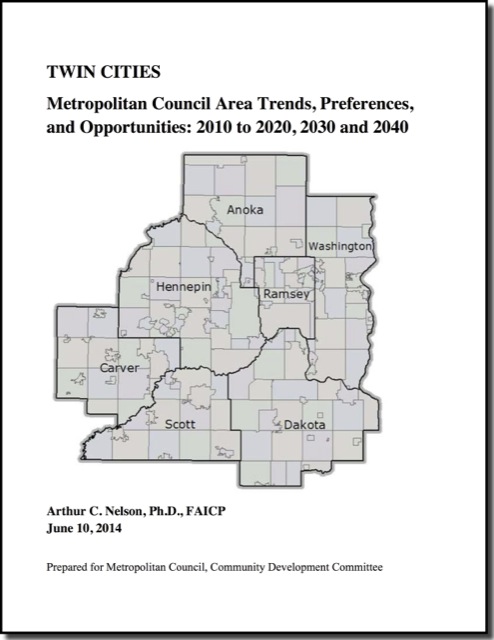University of Minnesota planning professor Richard Bolan has responded to the Antiplanner’s critique of the Twin Cities’ Metropolitan Council’s plan to emphasize high-density housing and discourage large-lot single-family homes. My op ed pointed out that planner Arthur Nelson’s predictions that the demand for single-family homes was declining were based on oversimplified surveys that asked people questions like would they want to live in a “walkable community.”
A lot more factors are at work in people’s housing choices. “Given a choice between a 1,400-square-foot home on a tiny lot in a congested part of town for $375,000 and a 2,400-square-foot home on a large lot in a quiet suburb for $295,000,” my op ed said, “most people would prefer the larger home.” My point was the issues were too complicated for planners to be able to see what people would want 26 years in the future, and since homebuilders can adequately respond to changes in demand, there was no need for central planners to try to predict the unpredictable.
Bolan admits that he’s “not a supporter of Arthur C. Nelson’s report” on future housing demand. But Professor Bolan has his own reasons why central planners should try to determine people’s housing choices in the future: externalities.









